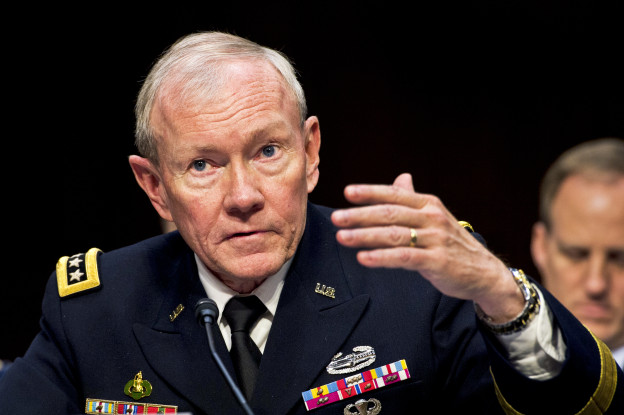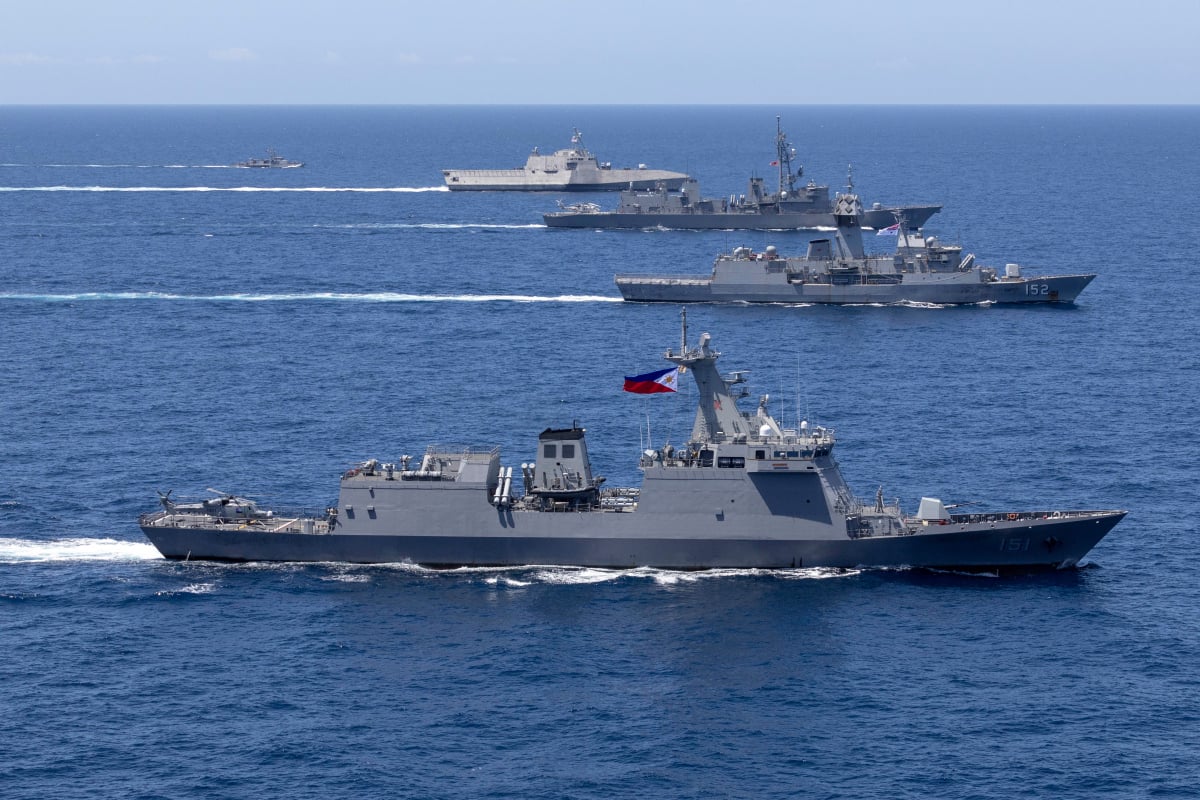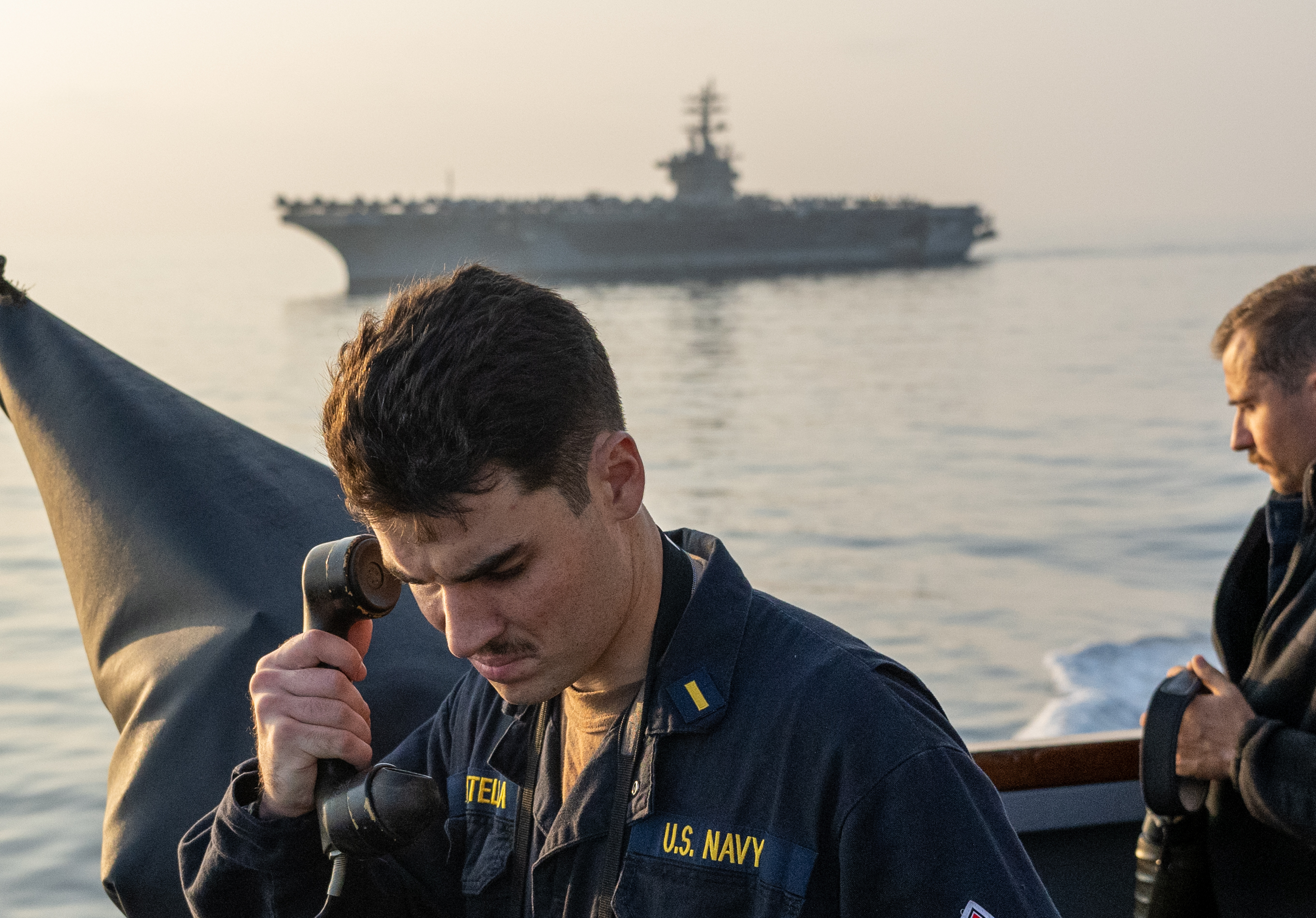
Last week Gen. Martin Dempsey, Chairman of the Joint Chiefs of Staff, outlined American military options in Syria, in response to a threatened hold on his reconfirmation by Sen. John McCain (R-Ariz.) and a letter signed by McCain and Senate Armed Services Committee Chairman Carl Levin (D-Mich.). Both senators are proponents of American intervention in Syria, and both are frustrated by what they believe is the administration’s slow and limited decision to intervene in Syria’s conflict. The traditions of American civil-military relations make uniformed discussions of military options in politically charged issues—especially in a public forum—a delicate issue. Nevertheless, in order to secure a second term as JCS chairman, and in response to a formal request, Dempsey presented an unclassified assessment of five options for American military involvement in Syria. They are summarized as follows.
Train, Advise, and Assist the Opposition
This would be an expanded version of the covert program to train the rebels, which has been ongoing for months, and the more recently approved decision to provide small arms. Ongoing nonlethal logistical support and intelligence sharing would also play a large role, and the entire American contribution to the operation could theoretically occur outside Syria’s borders. Nevertheless, such an effort requires significant caveats. A splintered rebellion limits U.S. options to shape its ideological bent, and arms alone—even the more efficacious anti-tank and antiaircraft systems that the United States remains reluctant to directly supply—may not be enough to conclude the war.
Nor, even in a cross-border operation where Americans rarely or never enter Syrian territory, would an operation be risk-free. As Dempsey outlines, such programs likely cost around $500 million just to initiate. Further, keeping boots off the ground in Syria still requires U.S. manpower elsewhere. “Several hundred to several thousand troops” would participate, many of which would be Special Forces specializing in unconventional warfare. Even if their cross-border bases remained safe, they would deny personnel critical to security-force assistance and foreign internal-defense operations across the globe. Furthermore, arms might continue falling into the hands of extremists, anti-American groups (whether affiliated with extremist rebels or the regime) might target Americans on the border, and even allied rebels potentially could commit war crimes.
Conduct Limited Stand-off Strikes
According to Dempsey, this option would use air and naval assets to deliver precision munitions directed against regime military forces and air defenses, as well as support and command-and-control infrastructure. A variety of weapon systems—ranging from submarine-, ship-, or aircraft-launched missiles to stealth bomber-delivered munitions—could conduct these stand-off strikes with minimal risk; Israeli forces have conducted similar strikes. However this limited-risk option also limits effects. While such strikes might gradually degrade regime capabilities or increase desertion rates, as Dempsey notes, stand-off weapons are expensive, limited in allied-nation stocks, and ill-suited for dismantling a country’s military on the ground.
Regime forces could mitigate stand-off potency by dispersing their forces enough to make reliance on stand-off weapons impractical, or further concentrating their forces in and around populated areas, raising the risk of collateral damage to civilians or foreigners, such as the thousands of Russians who live in Syria. The high price of precision weapons and the cost of operating their delivery systems would mean costs in the billions, particularly if the operation dragged on. Even the 78-day bombing campaign in Serbia would be an optimistic benchmark for Syria, as limiting to stand-off weapons would decrease the comprehensive scope of force degradation and the possible operational tempo.
Establish a No-Fly Zone
Advocates of intervention frequently advocate a Syrian no-fly zone, which would require not just stand-off strikes and a comprehensive suppression of Syrian air defenses, but also persistent air patrols over its airspace. Dempsey says a no-fly zone would require “hundreds of ground and sea-based aircraft, intelligence and electronic warfare support, and enablers for refueling and communications”—tracking analysis by civilian researchers. Though proponents often compare notional Syrian no-fly zones with NATO operations in Libya, Operation Odyssey Dawn, from its early days, struck ground forces, not just aircraft, which Dempsey previously said likely account for roughly ten percent of casualties in Syria, where the regime inflicts the most damage with “mortars, artillery, and missiles.”
Directed against a ground-intensive regime campaign with greater military capabilities—both on the ground and against aircraft—than Gadhafi’s Libya, yet with a more limited target set, a no-fly zone would be more costly, more lengthy, and less effective than NATO intervention in Libya. Dempsey estimates a cost of at least $1 billion a month, with the possibility of American casualties or aircraft losses from hostile fire. All this would occur to target a small subset of Syrian regime capabilities, with uncertain implications for the civil war itself.
Establish Buffer Zones
This option would use “lethal and nonlethal force to protect specific geographic areas, most likely across the borders with Turkey or Jordan” to aid rebels and protect civilians. In addition to a no-fly zone, American aircraft and naval stand-off systems would need to attack Syrian ground forces and respond to missiles or artillery fired from outside the buffer zone. Dempsey also notes that providing support to these safe zones, and reinforcing them against the possibility of ground penetration, would require thousands of U.S. troops on the Syrian side of the border, or even inside Syria itself.
Dempsey notes that fires into, or collapses of buffer zones would compound potential casualties because of civilian concentration, while without ground forces at their perimeter, extremist groups—not just moderate forces—could seek respite from regime forces. A buffer zone, in addition to combining the costs and risks of the previous three options, might also still fail to create a decisive rebel victory. Rebel forces might, as in Libya, still need foreign air support to break out of defended areas and advance into regime-held zones where their local support is weak.
Control of Chemical Weapons
None of the aforementioned options address Syria’s chemical weapons stocks, a common concern in intervention debates. Attempts to stand-off and destroy Syria’s chemical weapons, for military and intelligence limitations as well as collateral damage concerns, cannot be comprehensive. Relying on Syria’s rebel forces to secure them does not prevent their use, and increases the risk they fall into the possession of hostile groups. Seizing, securing and safely destroying Syria’s chemical weapons would require U.S. ground troops inside Syria. Though the Pentagon seeks creative workarounds, disposing of chemical weapons is a lengthy process—a task not yet completed in America—and the personnel and infrastructure undertaking it would need entry into and protection inside Syria. Inserting both special operations and conventional ground forces would require similar operations to the no-fly zone and stand-off strikes.
Risks in such operations would come not just from Assad’s forces resisting assault, but anti-American extremist groups on both sides of the conflict who would take any opportunity to attack U.S. troops. Additionally, Dempsey doubts that the United States could destroy all stocks, while collapsing the regime might open opportunities for extremists to seize sites that America cannot reach quickly or at all. This option would be the most expensive per month, and could last long past the fall of the regime, given the possibility of anti-American groups—such as Salafi jihadist—were to seize chemical weapons and thus triumph along with the opposition.
None of the aforementioned options quickly or easily resolve Syria’s civil war, in which estimates of dead recently passed 100,000. Dempsey also warned that none would provide a definite end-state under which the United States could exit Syria’s conflict. While reporting suggests the Department of Defense advice sours the administration to further involvement, the State Department appears persistently interested in pursuing more direct military options. With the merit of the last war in Libya still under debate, and the legacy of Iraq and a still-unfinished conflict in Afghanistan, Dempsey’s unclassified estimate provides additional data to the public but is unlikely to resolve deeply held differences regarding U.S. policy in Syria. While McCain dropped his threat, he remains unsatisfied with Dempsey’s pessimistic assessment.





